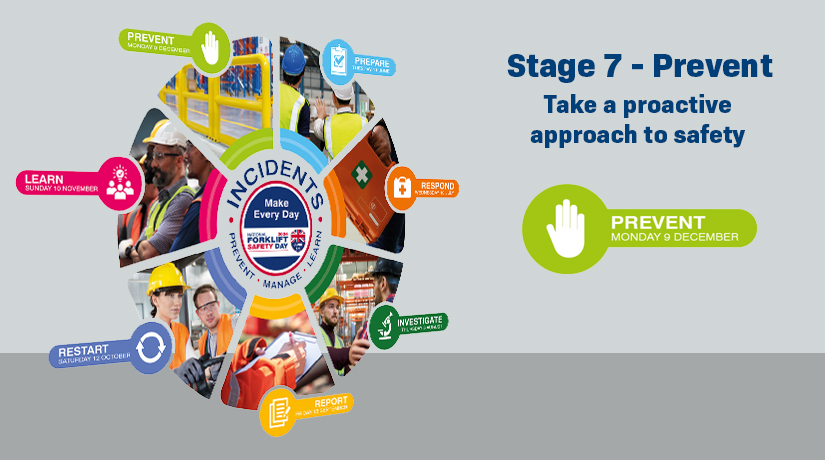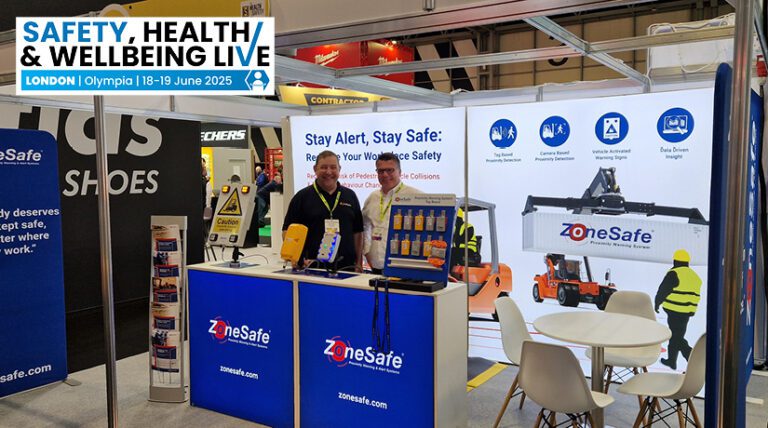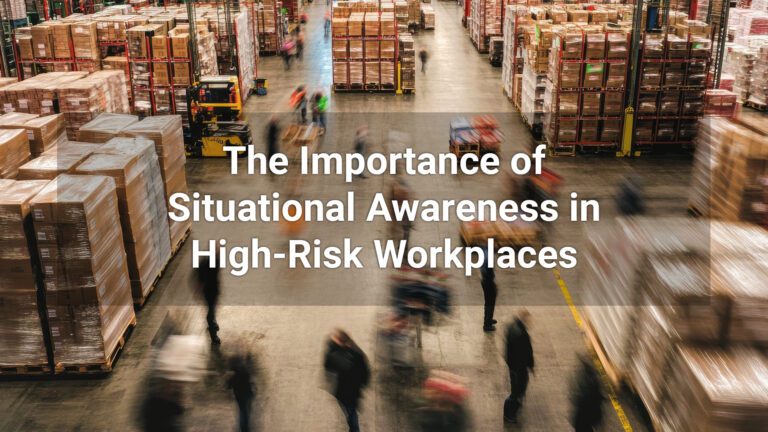La journée nationale de la sécurité des chariots élévateurs à fourche (NFSD) campaign was launched in June of this year under the slogan ‘Prevent – Manage – Learn’. This year’s initiative explores the actions to take before, during and after a forklift incident, and has been delivered in instalments over a seven-month period. The 7th and final stage of the cycle is Prevent.
Prévenir
The final stage of the incident cycle, Prévenir, looks into the most effective prevention strategies that should be implemented to help reduce the opportunity for forklift accidents in the workplace.
The annual UK Material Handling Association (UKMHA) National Forklift Safety Day (NFSD) campaign aims to raise standards across the industry to reduce the incidence of forklift accidents. The 2024 campaign has stretched across seven months to highlight each stage of the incident cycle and has focused on the actions to take before, during and after the event, as well as discussing good practice strategies in accident prevention. Forklifts are commonly used in a broad range of sectors and fulfil key workplace operational requirements. Still, with it being estimated that around 50 people are killed and 5000 injured in accidents involving workplace transport every year, it’s clear more needs to be done to prevent forklift accidents.
Near Miss Reporting
A key component in incident prevention is near-miss reporting. This involves putting in place a systematic response to potential hazards and close calls, when identified, that could potentially result in an accident.
Examples of near misses include:
· Pedestrians working in close proximity to MHE
· A forklift engineer working in an unsegregated area
· Warehouse racking showing signs of impact damage
· A blocked pedestrian entrance to a warehouse or
Steps for employers to bear in mind when encouraging near-miss reporting
· Encourage – make reporting easy and rewarding
· Involve – ask for input from everyone involved and provide feedback
· Investigate – find out what happened and why
· Improve – focus on improving systems and procedures rather than blaming individuals
· Review – ensure changes are enacted and effective
Incentivise
A reporting system is relatively easy to implement, but the challenge often lies in gaining buy-in from employees and encouraging them to report. It’s important to exercise a no-blame culture and open dialogue where employees feel comfortable raising concerns. It’s worth considering a recognition scheme or incentivising those who do speak up. These reports help to avoid serious accidents, so a small financial incentive for near-miss reporting is worth considering.
Formation
Thorough safety training is a vital part of accident prevention and near-miss reporting. All new employees should also receive detailed indication training, which should include near-miss information and unsafe information training. Training should also be updated and delivered when processes are changed due to near-miss reports. Near-miss reporting should be a fundamental part of your health and safety strategy. Failing to do so puts your business at increased risk of serious forklift accidents, injuries, fatalities and major property damage.
The Cost
Incidents cost businesses in many ways, from emotional impact and low morale to serious reputational damage. However, the financial impact is also a significant consideration and it’s a collective effort – operators and supervisors – everyone should be involved.
Prevent with ZoneSafe
ZoneSafe is a preventative safety system that stops accidents in their tracks. When a near miss occurs and is investigated, it reveals a potential threat in the workplace. Risks around lack of segregation and forklifts working around pedestrians can result in serious and even fatal accidents and damage to the business. Meeting the challenge head-on and installing ZoneSafe can easily avoid these types of accidents. The system automatically raises awareness of hazards, crucially before an accident takes place. The ability to do so transforms high-risk workplaces into safer operations, with ZoneSafe customers proudly reporting significant improvements in safety on-site – case studies www.zonesafe.com/case-studies
Contact ZoneSafe to discuss your forklift safety concerns – https://zonesafe.com/contact-us/
Further reading – https://nationalforkliftsafetyday.co.uk/




